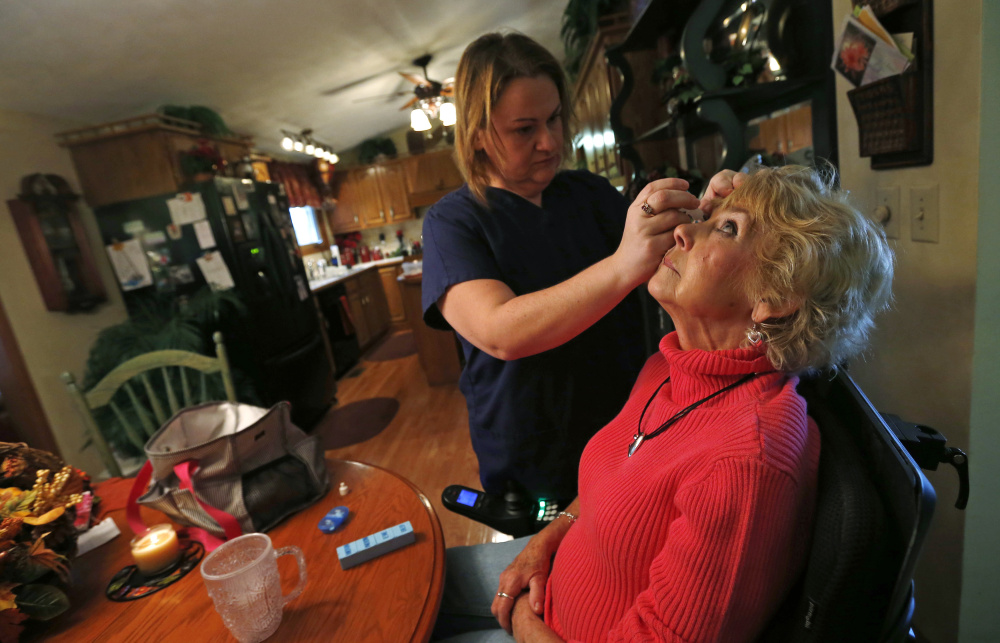Labor Day is set aside to honor the American worker, who helped build the world’s strongest economy on the principles of shared prosperity and equal opportunity for advancement.
So, it’s ironic that while millions of us will enjoy a paid day off, millions more will be hard at work in restaurants, stores, medical facilities and in homes caring for children or the elderly, working long hours for low pay and little hope of getting ahead.
This is the state of the working class in post-industrial America, where globalization and technology have erased manufacturing jobs while the demand for services has increased. The growing reality is that the jobs that employ the most people – and the ones that are projected to grow the most over the next decade – are in sectors like hospitality, retail, customer service and health care, not in the mills or factories that created the blue-collar middle class that we celebrate on Labor Day.
Understanding this new working class and representing its interests will be the challenge of our time for policymakers in government and the labor movement. Only when these jobs can support stable families that nurture children who can take full advantage of educational opportunities will we see the kind of inclusive economy that most Americans want.
JOBS THAT CAN’T BE OFFSHORED
There is no absolute definition of working class, but one clear line of demarcation is attainment of a college degree. Most of us know an exception – like a well-educated person who does manual labor or a successful business operator who never finished high school – but most of the time, a college diploma is a prerequisite for higher-paying, middle-class work.
Much of the conversation about building the middle class has centered on making higher education more available, and rightly so. The earnings gap between graduates and nongraduates has been growing for decades.
But fewer than one third of Americans have a four-year degree, and even if there were a massive public investment made to significantly increase the number of college graduates, there would still be many more people without diplomas than with them. Too often, however, these workers are left out of debates on economic opportunity.
Service jobs cannot be sent offshore, and most can’t be replaced by robots. As baby boomers reach retirement age, demand is increasing for personal care aides, home health aides and nursing assistants as well as a wide range of hospital aides and assistants – all jobs that do not require more than a high school diploma.
Who fills these jobs? According to Tamara Draut, author of “Sleeping Giant: How the New Working Class Will Transform America,” many are women. Two out of three non-college educated women are in the workforce, compared to half in 1980. These jobs are also much more likely to be filled by someone who is black, Hispanic or Asian, especially if you look at the youngest segment of the workforce, where 47 percent of employees in service jobs are minorities.
LOW PAY, FEW BENEFITS
And contrary to popular opinion, these jobs are not filled by teenagers working for pocket money. On average, minimum-wage workers, a subset of the working class, supply at least half of their family’s income.
Many of these workers earn so little that they qualify for government programs like food stamps and rental assistance. They rarely earn paid time off when they are sick or need to care for a family member. Many lack health insurance. They are rarely represented by a union.
The policy implications are clear. These jobs are essential, and the people who fill them deserve to have the dignity that comes with making a living by their labor. That means a higher minimum wage, earned paid leave and access to affordable health insurance, among other protections.
The emerging awareness that these workers share common interests should lead them to join unions so they will have a stronger voice in the places they work and in the political arena.
Then they can engage in the kind of activism that brought us the end of child labor, the introduction of the eight-hour day and the holiday we celebrate on the first Monday in September every year.
Send questions/comments to the editors.


